Posted: Wednesday, July 15, 2020
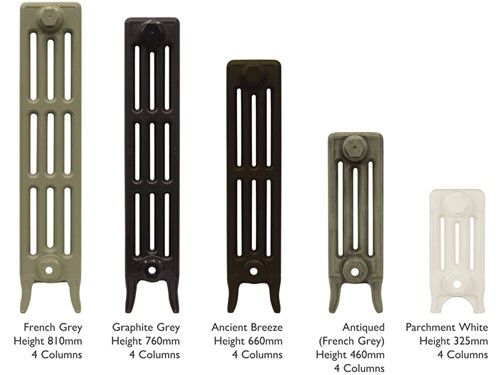 When deciding what size radiator you need, there are a few things you need to consider to be able to achieve the ideal level of heat in your room, such as:
When deciding what size radiator you need, there are a few things you need to consider to be able to achieve the ideal level of heat in your room, such as:
But, choosing the perfect size radiator doesn’t have to be complicated! To help you out, we’ve put together a guide with all the information you need to get going...
The best way to figure out what size radiator you need is to use a BTU calculator to see how much heat your room requires. Once you have made this calculation, you can go ahead and choose a radiator size that caters for your requirements.
Take a look at our BTU calculator here to get started - then come back to find out more!
BTU stands for ‘British Thermal Unit’ and is a measurement of how much energy is needed to raise the temperature of your room.
When calculating the BTUs you need for your radiator, there are a number of factors that come into play.
Generally, we aim for some of our rooms to be warmer than others - we usually like to have more heat for living rooms, bathrooms and dining rooms, while our kitchens, hallways and bedrooms tend to be kept a little cooler.
The direction your room faces can also have an effect, with north facing rooms tending to be cooler and therefore needing more heat. French windows also add a higher BTU requirement, while double glazing and insulation reduces the amount of heat you need from a radiator.
Working out the BTUs you need for yourself can become difficult, which is why BTU calculators are so useful when sizing a radiator. You need to know the cubic footage of your room first before making the necessary adjustments depending on your particular room.
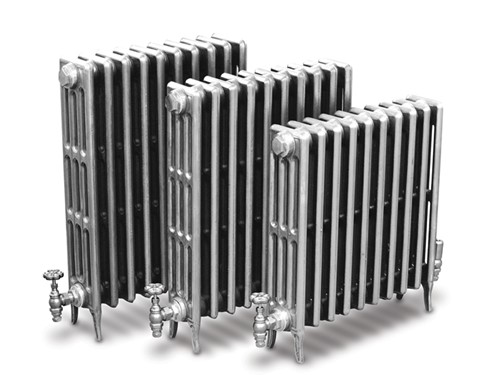
When sizing a radiator, getting the correct BTU is essential for ensuring your room is heated comfortably and efficiently. If you don’t, you may well find yourself constantly struggling to heat up your room, or finding it gets just too stuffy.
It can also help you out if you have multiple radiators in one room. If you know how many BTUs you need, you can simply divide it by the number of radiators you have to work out which size each one should be.
So, why can’t you just get the biggest radiator that fits your space and turn it down when it gets too hot?
Well, you could, but you might find it is not as cost-effective as buying the right size radiator in the first place. A bigger radiator is usually more expensive, so it’s best to only pay for what you actually need.
It’s recommended that you choose a radiator size that is within a 10% range of your BTU requirement. However, if it is a choice between buying a radiator that is a little on the small side vs one that is slightly too big, it is best to oversize and buy one that is too large. Afterall, it is much harder to heat a cold room up than vice-versa.
Have you already used our BTU calculator? You now need to know how to take the correct measurements to ensure your new radiator fits your available space.
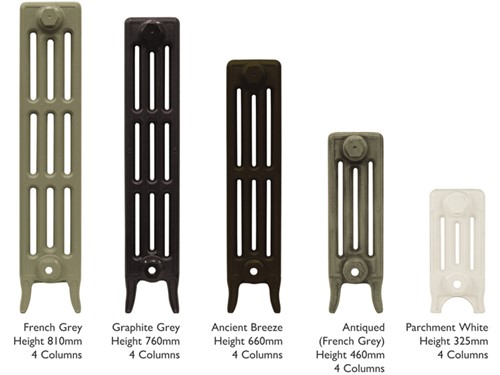
To measure your radiator width correctly, make sure you measure the distance between the two valves at either end, rather than the panel itself. This ensures that you won't have to adjust the pipework. You should also go for one that is a similar depth for the easiest installation.
You can read more about how to replace a radiator yourself here.
If you do need to change your radiator size to either a bigger or smaller one, don’t worry - it is still possible to do so! Often, if a radiator is very old or if insulation has been added to the house at a later date, a different size radiator might be preferable.
To do this, you will usually need to contact a plumber to come and adjust your pipework to fit the new size and dimensions. If you are adding considerably bigger radiators to your home - or adding an entirely new one to the heating system - check that your boiler is powerful enough to accommodate them, first.
If you have a single panel radiator, and want more heat without having to change the size of the radiator, you can consider changing to a double panel radiator
A double panel radiator will produce a higher heat output than a single panel one, as they have a higher surface area. They can also help your room heat up quicker, making them preferable for larger rooms.
If you are looking for traditional or cast iron radiators, they do not have panels, but ‘columns’ instead. Look for a 3 or 4 column radiator if you want to keep the same size, but need more BTUs.
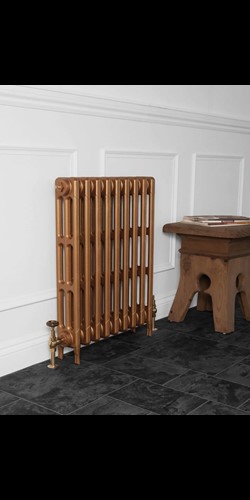
Pictured: Victorian 3 Column Cast Iron Radiator
We’ve already mentioned that you should try and buy the right size radiator for your room dimensions, only oversizing if the alternative is below your BTU requirement.
But, what if you have a very large room - is it better to measure for one big radiator, or to have two smaller sized ones?
If you have a very long room, even a large sized radiator might not be enough to heat right down to the opposite side. In this case, it might be best to split the amount of BTUs you need between two smaller radiators to create a more even level of heat.
Struggling for wallspace to fit the right size radiator? Consider a vertical radiator!
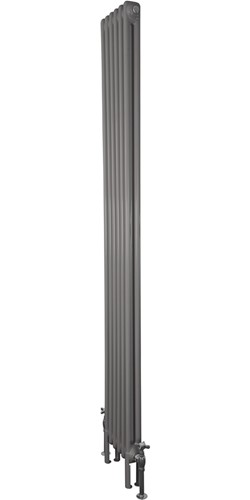
Pictured: Enderby 2 Column, 6 Section Steel Radiator - 1910mm
Cast iron radiators often require a bit more space than contemporary steel radiators. This is because they are usually heavier, meaning they need to be attached to the floor rather than mounted on the wall. Some of our cast iron radiator ranges however can be wall mounted. Please contact us for further details.
However, while they might require more room, cast iron radiators can provide more efficient heat than a steel radiator of the same size. While cast iron doesn’t heat up as quickly as steel, it retains its heat for a much longer period of time. The result is that heat can continue to circulate into your room even after your central heating has switched off. This makes them perfect for larger rooms that take longer to heat up.
Another benefit of choosing a cast iron radiator is that they often actually come in sections. This means that you can choose the exact size radiator to meet your BTU and space requirements.